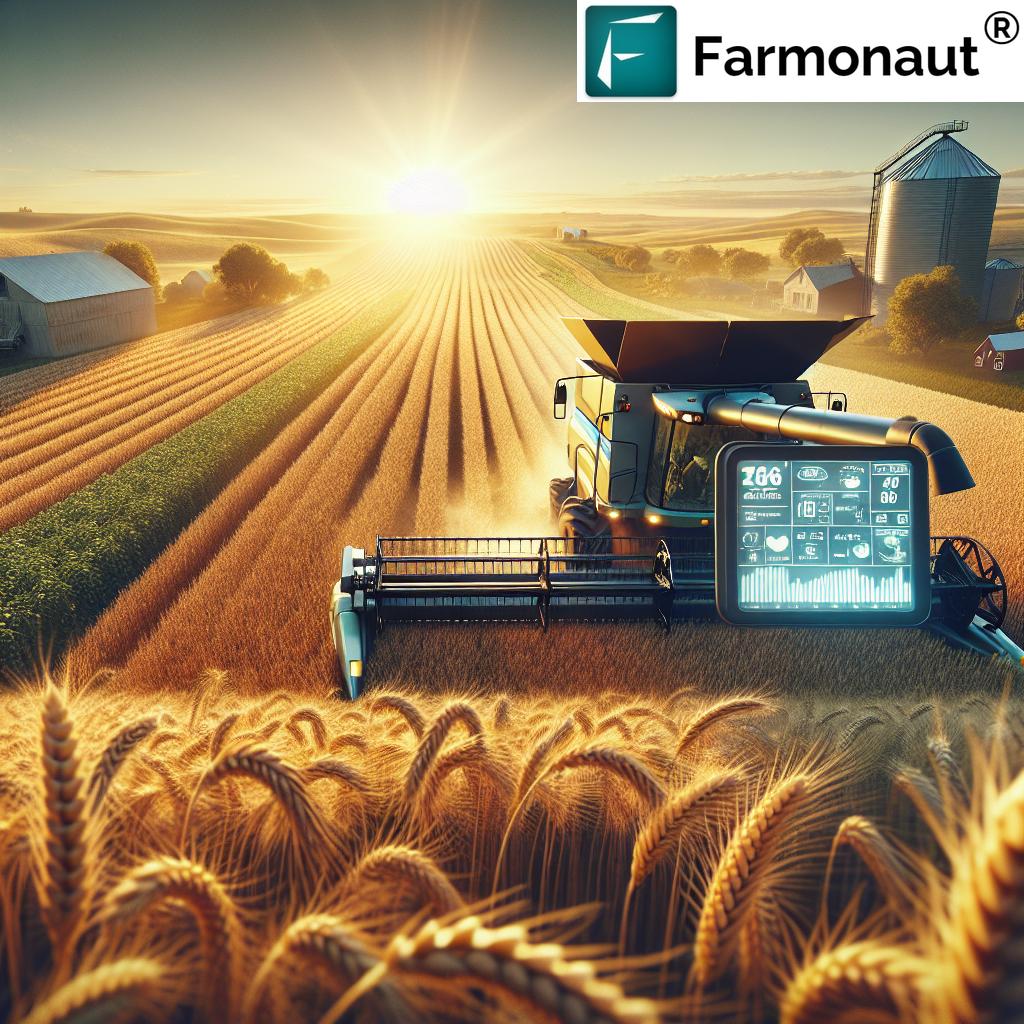Fertilization Seattle, WA & Lakeside Marblehead, OH Tips: Modern Practices to Boost Soil & Crop Health
“Seattle reduces synthetic fertilizer use by 25% annually, promoting eco-friendly soil management.”
Fertilization for Sustainable Agricultural Productivity: Insights from Seattle, WA and Lakeside Marblehead, OH
Fertilization remains the cornerstone of agricultural productivity, playing a critical role in sustaining crop yields and soil health. As we progress into 2025, fertilization seattle, wa, fertilization lakeside marblehead, oh practices take center stage for environmental protection, innovation, and resource efficiency.
From the cool, moist maritime climate of Seattle, WA—characterized by high rainfall and acidic soils—to the nutrient-sensitive watershed of Lakeside Marblehead, OH near Lake Erie, region-specific fertilization practices optimize soil, boost crop health, and promote sustainability.
This detailed guide explores strategies, technologies, and management approaches relevant for 2025 and beyond. It offers actionable insights for growers, farmers, and agricultural professionals including sustainable programs, precision agriculture tools, and advanced fertilization techniques—improving both crop performance and environmental outcomes.
- Fertilization remains a critical tool for sustaining food security and environmental health in diverse regions like Seattle, WA and Lakeside Marblehead, OH.
- Modern fertilization integrates soil testing, nutrient management, and sustainable farming for optimal yields and soil health.
- Precision tools and digital insights help tailor fertilizer application in variable climatic environments and soils—reducing runoff and improving efficiency.
- Adopting the 4R Nutrient Stewardship framework (right source, rate, time, place) is increasingly essential for farmers seeking to conserve resources.
Fertilization Seattle, WA: Sustainable Approaches amid Cool, Moist Climates
Fertilization in Seattle, WA is uniquely influenced by its cool, moist maritime climate, high rainfall, and often acidic soils. Agricultural practices in the region must contend with nutrient leaching, waterlogging, and the need for tailored, eco-sensitive approaches.
Let’s explore the fertilization strategies that help Seattle-area farmers overcome these challenges while achieving sustainable crop management in 2025.
Seattle’s Environmental Context: Climate and Soil Challenges
- Climate: Mild temperatures, high precipitation (over 37 inches/year), and frequent overcast conditions.
- Soil: Soils tend to be acidic (pH 5.0–6.0), with moderate-to-high organic matter but prone to compaction and nutrient runoff.
- Crops: Specialty crops dominate, including berries, vegetables, and nursery plants, all requiring careful nutrient management.
Key Fertilization Seattle, WA Strategies for 2025
-
Soil Testing and Nutrient Profiling:
Seattle growers strongly emphasize frequent soil testing to determine precise nutrient needs. This approach helps avoid the over-application of fertilizers, ensuring each crop receives the right type and amount of nutrients.
For example: Organic berry growers utilize routine laboratory analyses to tailor nitrogen (N), phosphorus (P), and potassium (K) inputs based on actual deficiency or sufficiency. -
Precision Fertilizer Application & Modern Tools:
Seattle’s adoption of digital technology—including GPS-guided applicators and remote satellite sensing—enables precise fertilizer placement and reduces waste, a vital tactic considering the region’s rapid nutrient leaching due to heavy rainfall.Explore Farmonaut’s Large Scale Farm Management Solutions to enhance fertilizer monitoring and field-level precision via satellite-driven analytics (NDVI, soil moisture, and health indicators).
-
Organic Amendments and Cover Cropping:
Growers in and around Seattle are increasingly encouraging organic inputs such as compost, green manure, and biochar. These improve soil structure, microbial activity, and aid in reducing reliance on synthetic fertilizers.- Adding cover crops like clover or vetch fixes atmospheric nitrogen, curbs erosion, and bolsters soil organic matter ahead of subsequent plantings.
-
Slow-Release and Controlled-Release Products:
Switching to slow-release formulations minimizes the immediate environmental impact, decreasing runoff into sensitive aquatic systems like Puget Sound.- Controlled-release nitrogen ensures nutrients are released only as crops require, improving efficiency and reducing aquatic pollution risks.
-
Programs for Environmental Stewardship:
Numerous programs across Washington promote sustainable fertilization, including local extension education, incentive payments for organic cover cropping, and discounts on environmentally preferable fertilizers.
Track Your Carbon Footprint with Farmonaut – essential for monitoring progress in reducing emissions from fertilizer use.
Environmental & Sustainability Impacts in Seattle
- Reducing runoff: Adoption of slow-release fertilizers and cover crops is minimizing nutrient leaching and helping sensitive aquatic systems stay healthy.
- Increasing Organic Matter: Farmers embracing compost and green manure report a steady annual increase in soil health and biodiversity.
- Technology-Informed Application: Data-driven decisions are improving fertilizer application rates and maximizing nutrient uptake efficiency across the region.
By using the Farmonaut app, Seattle farmers, consultants, and agronomists access real-time soil nutrient maps, weather forecasts, and AI-based recommendations—vital for smarter fertilization in cool, wet environments.
“Lakeside Marblehead farmers report a 30% increase in soil organic matter using sustainable fertilization practices.”
Fertilization Lakeside Marblehead, OH: Protecting Lake Erie with Advanced Stewardship
Moving east, Lakeside Marblehead, OH lies at the heart of a fertile agricultural region bordering Lake Erie. Here, fertilization practices are shaped not only by productivity goals but also by the critical need to protect the lake’s ecosystem.
Year after year, farmers and local authorities in northwest Ohio strive for sustainable nutrient management to prevent fertilizer runoff—linked to notorious algal blooms and water quality declines affecting drinking supplies, recreation, and fisheries.
Key Environmental & Agricultural Challenges in Lakeside Marblehead, OH
- Soil Profiles: Rich, loamy soils with moderate-to-high fertility but a tendency for phosphorus accumulation.
- Climate: Seasonal precipitation and storm-runoff events exacerbate nutrient transport into Lake Erie.
- Water Quality Risks: Phosphorus and nitrogen excess have led to harmful algal blooms in Lake Erie—a major concern for residents, regulators, and the entire agricultural sector.
Fertilization Lakeside Marblehead, OH: 2025 Strategies and Programs
-
Soil Testing and Site-Specific Nutrient Application:
Farmers in Lakeside Marblehead increasingly adopt precision soil testing—mapping phosphorus (P) and nitrogen (N) hot spots to guide input decisions and reduce over-application.- Variable rate technology adjusts fertilizer doses field by field, reducing waste and improving soil health.
-
4R Nutrient Stewardship:
The region has widely embraced the 4R framework (Right source, right rate, right time, right place)—balancing crop needs with environmental protection goals.- By focusing on the right nutrient at the right time, farmers minimize loss and maximize crop yield and resource efficiency.
-
Conservation Tillage and Buffer Strips:
Reducing tillage maintains root structures, holding both soil and nutrients in place amid heavy rain. Vegetative buffers intercept and filter runoff before it enters the Lake Erie watershed. -
Cover Cropping and Crop Rotations:
Like Seattle, Lakeside Marblehead growers are leveraging cover crops to absorb excess nutrients between main crop cycles, reducing the reliance on synthetic fertilization and minimizing phosphorus leaching. -
Watershed-Based Planning & Collaboration:
Local stewardship programs drive multi-stakeholder action—combining extension support, regulatory guidelines, and field-level decision aids to ensure fertilizer applications are environmentally sound.
Adopting digital tools and satellite-driven advisory—like those on the Farmonaut platform—supports farmers with real-time insights on field health, soil moisture, and runoff risk.
With precision management and watershed-wide stewardship, Lakeside Marblehead is steadily seeing lower runoff, better soil resilience, and environmental improvements—essential in 2025 as regulatory pressure and climate uncertainty grow.
Benefits of Sustainable Fertilization in Lakeside Marblehead:
- Reducing Nutrient Pollution: Variable-rate and site-specific applications significantly reduce phosphorus and nitrogen losses to the lake.
- Increasing Soil Organic Matter: Sustainable practices increase organic content, enhancing crop yield and drought resilience.
- Boosting Economic and Environmental Performance: Smarter input use translates to lower costs and improved ecological health for the entire region.
To maximize environmental benefits, Farmonaut’s Traceability Solutions provide digital records on fertilizer application, soil health, and program compliance—bolstering eco-certification, transparency, and regulatory confidence for Lake Erie-adjacent farms.
Comparative Fertilization Practices: Seattle, WA vs Lakeside Marblehead, OH
Understanding regional differences enhances our ability to adapt fertilization practices for optimal soil, crop and environmental outcomes. The following table compares key fertilization strategies, estimated application rates, soil improvement, and sustainability adoption levels for these two distinct agricultural regions.
| Location | Common Fertilization Methods | Avg. Fertilizer Application Rate (lbs/acre, est.) |
Estimated Soil Improvement (% increase organic matter) |
Crop Yield Increase (%) | Sustainable Practice Adoption Level |
Environmental Benefit |
|---|---|---|---|---|---|---|
| Seattle, WA | Soil testing-based applications, Precision digital tools (inc. satellite), Organic amendments (compost, green manure), Cover cropping, Controlled/split Nitrogen use | 70–90 (N), 30–40 (P2O5) | 2.5–4% over five years | 10–18% | High | Reduced nitrogen leaching, Lower GHG emissions, Improved aquatic protection |
| Lakeside Marblehead, OH | Site-specific/variable rate tech, 4R Stewardship (right source, rate, time, place), Conservation tillage, Buffer strips, Cover crops, Watershed-based plans | 75–110 (N), 35–55 (P2O5) | 3–5% over five years | 12–22% | High | Significantly reduced runoff to Lake Erie, Enhanced soil resilience, Lowered algal bloom risk |
Table Insights:
- Both regions demonstrate high adoption of sustainable practices and a clear focus on reducing nutrient runoff.
- Seattle leverages organic amendments heavily for soil health, while Lakeside emphasizes watershed-centric nutrient management strategies.
- Precision and technology-driven fertilization are helping keep environmental impacts low and productivity high into 2025 and beyond.
Emerging Trends in Fertilization Management for 2025 and Beyond
As technological, regulatory, and environmental forces reshape agriculture globally, farmers and agronomists in Seattle, Lakeside Marblehead, and comparable regions are embracing new fertilization techniques to stay ahead. Here’s what’s trending for sustainable crop success in 2025:
-
Precision Agriculture & Satellite Insights:
High-resolution soil and crop monitoring—using satellites and sensors—enables targeted fertilizer application. This reduces waste, improves efficiency, and protects sensitive environments by projecting input needs in real time. -
AI-Driven Fertilization Management:
AI tools analyze weather, soil, and crop data to generate ongoing, field-ready application guidance. These systems help farmers fine-tune fertilizer rates, timing, and product choice in ways that traditional calendars can’t match. -
Biological and Microbial Fertilizers:
Rising demand for organic and sustainable agriculture has led to exponential growth in biofertilizer use (e.g. beneficial microbes, mycorrhizal fungi, and algae-based formulas) to spur nutrient cycling and boost soil structure. -
Integrated Cover Cropping:
Cover crops like rye, clover, and vetch more than ever help fix nitrogen, prevent erosion, and provide living roots to nurture soil health between commercial crop cycles in both Seattle and Lakeside Marblehead. -
Zero-Waste and Green Fertilizer Products:
Fertilizer producers and regional advocates are driving the shift toward green ammonia, zero-waste granules, and low-carbon nutrient blends that minimize both synthetic input dependence and ecological footprint.
Discover Farmonaut’s Carbon Footprinting platform: Analyze and reduce GHG emissions from fertilizer use and overall farm operations.
Example: AI and Satellite Integration for Advanced Fertilization (2025)
- Real-time diagnostics: Mobile-connected sensors deliver live updates on nutrient deficiencies and optimal timing.
- Automated equipment: Drones and robotics precisely apply fertilizers, even on complex terrain or in tough weather, conserving both fuel and products.
- Blockchain Traceability: Transparent, tamper-proof fertilizer records support sustainability certifications and regulatory standards.
Farmonaut’s Traceability Solutions ensure farmers, ag-retailers, and commodity processors can verify every step—from input purchase to field application—bolstering stewardship, transparency, and regulatory compliance.
How Farmonaut Empowers Precision & Sustainable Fertilization in Seattle, WA and Lakeside Marblehead, OH
At Farmonaut, we believe sustainable agriculture in 2025 and beyond relies on cutting-edge, accessible technology:
- Satellite-Based Monitoring: Our platform delivers fresh, multi-spectral imagery to monitor soil health, crop vigor (NDVI), and moisture levels—key for tailored fertilizer application in variable sites from Seattle to Lakeside Marblehead.
-
AI-Driven Advisory (Jeevn AI): We provide AI-powered insights to optimize fertilizer timing, rate, and formulation—cutting costs and boosting resource efficiency for every user.
Watch: JEEVN AI – Smart Farming with Satellite & AI Insights - Blockchain Traceability: Our blockchain-enabled tools guarantee transparent, verifiable documentation of fertilizer application and soil management actions—building trust and supporting eco-labelling.
- Real-Time Resource Management: Our web and mobile apps help farms of any scale monitor environmental impact, track emissions, and manage fleet logistics efficiently.
- Affordable and Scalable Solutions: Farmonaut subscriptions make advanced insights available to everyone—from smallholder farmers to large regional operators, improving fertilization and nutrient stewardship system-wide.
Explore the Farmonaut API for programmatic integration, or visit our API docs for developers seeking direct access to satellite insights, advisory data, and more.
Video Insights: Fertilization, Soil Health & Smart Tech Explained
-
Florida Fertilizer Ban 2025 ? 7 Rules to Save Indian River Lagoon & Stop Algae Blooms!
— Why regulated fertilizer use is critical to preserving lakes and waterways, with relevant lessons for Lake Erie and Seattle’s watersheds. -
Canada Fertilizer Boom 2025 | Green Ammonia, AI Precision & $2.3 B Granular Surge
— The future of green, precision, and zero-waste fertilizers for North American farms. -
Regenerative Agriculture 2025 ? Carbon Farming, Soil Health & Climate-Smart Solutions | Farmonaut
— Strategies for soil carbon increase, nitrogen fixation, and sustainable input cycles. -
Farmonaut Web System Tutorial: Monitor Crops via Satellite & AI
— Step into the future of field-level insight and nutrient management.
Frequently Asked Questions: Fertilization Seattle, WA & Lakeside Marblehead, OH
What is the ‘right’ fertilizer application rate for Seattle and Lakeside Marblehead?
Application rates are field-, crop-, and soil-specific. Seattle typically applies 70–90 lbs/acre N and 30–40 lbs/acre P2O5; Lakeside Marblehead applies slightly more, especially for corn or soy, but always based on soil testing and precision tools.
How does climate in Seattle, WA affect fertilization strategies?
The cool, moist maritime climate with high rainfall increases nutrient leaching and soil acidity. Therefore, local farmers focus on slow-release fertilizers, cover cropping, organic amendments, and digital monitoring.
What is the impact of fertilization runoff on Lake Erie near Lakeside Marblehead, OH?
Runoff containing excess nitrogen and phosphorus leads to harmful algal blooms and water quality degradation. Therefore, variable rate technology, 4R nutrient stewardship, buffer strips, and watershed-scale management are top priorities.
Which technologies does Farmonaut provide for sustainable fertilization?
Farmonaut offers satellite-based crop and soil monitoring, AI-driven recommendations (via Jeevn AI), blockchain traceability for fertilizer applications, resource management tools for fleets, and carbon footprint analysis.
Learn more about carbon footprint monitoring and supply chain traceability!
Can sustainable fertilization improve crop yields?
Yes. Seattle and Lakeside Marblehead show crop yield increases of 10–22% when sustainable, optimized fertilization strategies—tailored to the local environment—are followed, often with lower environmental costs.
How often should soil nutrient profiles be tested?
Soil should be tested at least annually in these high-stakes environments. More frequent testing is recommended when transitions are made to organic or precision methods, or after major weather events.
What are some examples of cover crops used for sustainable fertilization?
Both regions rely on rye, clover, vetch, and field peas as cover crops—these fix atmospheric nitrogen, build organic matter, reduce erosion, and trigger microbial soil activity.
How can farmers access Farmonaut’s solutions?
By visiting the Farmonaut web and mobile app, or our API developer platform, farmers can readily leverage affordable subscriptions and integrate advanced insight into their daily fertilization, stewardship, and resource management.
Conclusion: Fertilization, Sustainability, and Smart Stewardship in 2025+
Fertilization in Seattle, WA and Lakeside Marblehead, OH showcases the potential of localized, data-driven agricultural strategies for improving productivity, soil health, and environmental quality.
By embracing modern advances—including soil nutrient profiling, digital monitoring tools, AI-driven recommendations, and watershed-centric programs—farmers ensure both profitable yields and sustainable stewardship for future generations.
Whether you aim to reduce fertilizer runoff, boost organic matter, or track carbon impact, the combination of sustainability programs and smart satellite technology empowers better decisions.
At Farmonaut, we support farms large and small with real-time monitoring, traceability, and advisory tools—enabling everyone to participate in the future of responsible fertilization and agricultural excellence.
Farmonaut Subscriptions: Affordable Access to Sustainable Insight
Whether managing one field in Seattle or an entire district in Lakeside Marblehead, tailored subscriptions make Farmonaut’s advanced monitoring, AI, and blockchain-based tools accessible to all.
Key Related Farmonaut Products (and Their Use Cases)
-
Farmonaut Carbon Footprinting:
For growers seeking to measure, manage, and reduce carbon emissions from fertilization, tillage, and operations—ideal for organic certification, eco-labels, and compliance. -
Farmonaut Traceability Suite:
Digitally logs every action—from nutrient input to harvest—enabling transparent, blockchain-backed proof of sustainable and compliant practices. -
Fleet Management:
Monitor and optimize use of application machinery, track movement, fuel usage, and maintain efficiency. Especially helpful for medium and large agri-businesses. -
Crop Loan and Insurance:
Satellite-based verification reduces risk and bureaucracy for accessing farm finance and crop coverage, securing the investments behind every fertilized acre. -
Large Scale Farm Management:
Full-suite monitoring of vast operations, integrating all Farmonaut solutions (NDVI, weather, advisory, traceability) for streamlined, climate-ready stewardship.
Fertilization in 2025 depends on informed, sustainable stewardship.
Join us at Farmonaut—where precision agriculture meets accountability for Seattle, Lakeside Marblehead, and beyond.










